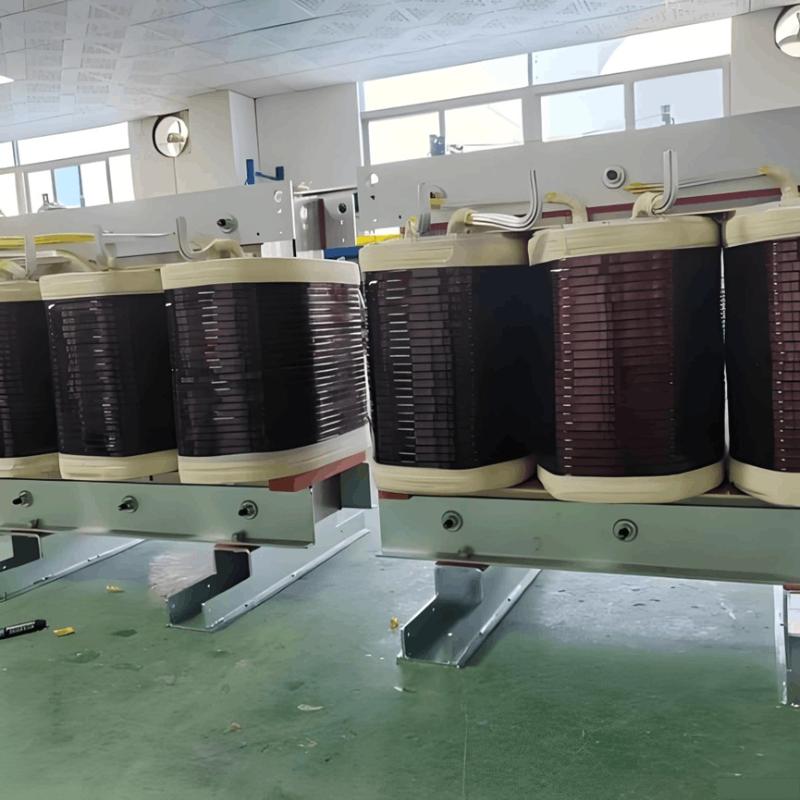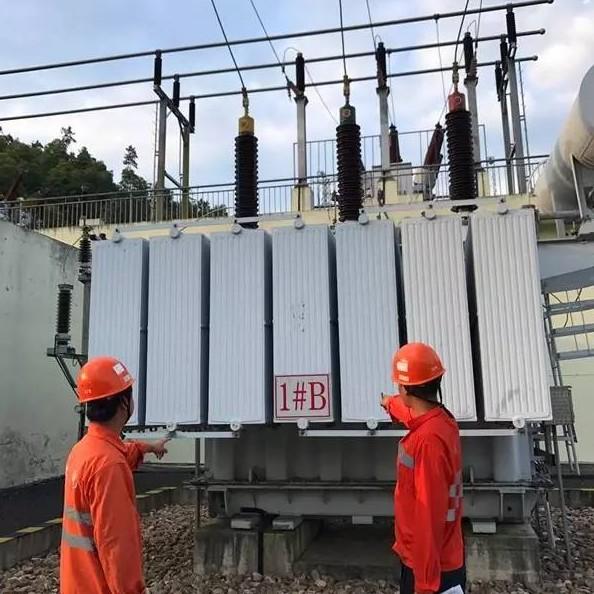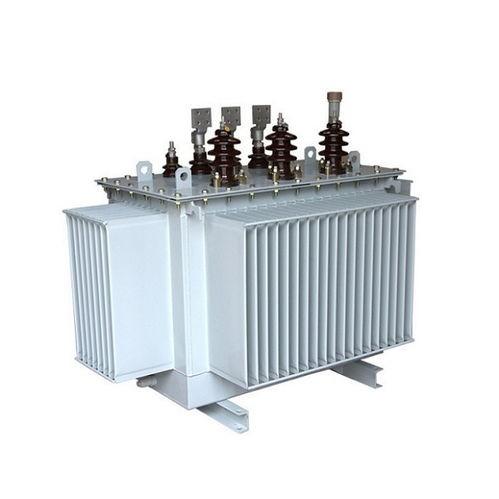Bendîna Bêdengka Transformerêya Sereke
Amacê bendîna bêdengka transformerêya sereke ye ku hûn dibeşên ji ser xirabên derveyî yên transformerdan (busbars an rêyan) ve girêdayî bikin, û jixweyek da ku her çewtiş li ser xerabên navendî yên transformerdan de were çalak bike. Bendîna bêdeng dikare bi karanîna her çewtiş wekî bendîna bêdengka pêwistiyê ya transformerdan di dema xerabên navendî de were çalak bike. Bendîna bêdeng bikar e li vir xerabên were çalak bike wanî şeyên ke bendîna pêwistiyê an switchên circuit-breaker têne.
Bendîna bêdengka zero-sequence ya transformerdan serekeye wekî bendîna bêdeng da ye ji bo transformerdan ên ku neytral yê wan direkten were vurnayî. Ev bendîna niha ne'andam îmkan nayê ji bo sisteman ên ku neytralan ne'andam direkten were vurnayî.
Bendînan bêdengê yên komon a li ser xirabên phase-to-phase yên transformerdan an jî overcurrent protection, low-voltage initiated overcurrent protection, composite-voltage initiated overcurrent protection, û negative-sequence overcurrent protection. Ji bohêma impedance protection da bikar e wekî bendîna bêdeng.
Analîzê yên Amadyar a Pirsgirêdanê ya Bendîna Bêdengka Transformerêya Sereke
Overcurrent Protection bi Composite Voltage Blocking
Bijarka busbar: Çalakkirina her çewtiş nisbiyê ya ku bendîna pêwistiyê tune were çalak bike.
Bijarka transformerdan: Çalakkirina her çewtiş nisbiyê ya ku bendîna pêwistiyê tune were çalak bike. Her çewtiş bendîna pêwistiyê ya transformerdan tune were çalak bike heye zeviya çêt.
Overcurrent Protection bi Composite Voltage Blocking (Non-Directional)
Segment I: Çalakkirina her çewtiş nisbiyê ya ku xerabên busbar tune were çalak bike. Dema delay a yekem bus tie werdisper, û dema delay a duyem local side werdisper.
Segment II: Bi bendîna line protection ên tune were çalak bike; çalakkirina her çewtiş nisbiyê ya ku bendîna line tune were çalak bike.
Segment III: Wekî bendîna bêdeng a Segment II; çalakkirina her çewtiş nisbiyê ya ku tri sides û transformerdan werdisper.
Ji bohêma bendîna bêdeng a terminal substations.
Li ser transformerdan ên ku rating-an 330kV û lê zêde hatine, high û medium-voltage side composite voltage blocked overcurrent protection wekî bendîna bêdeng mezin bikar e, bi dema delayê mezin, ji bo ku distance (impedance) protection sensitive backup provide bike (mînak, incident a complete shutdown ên ku di substation-a Yongdeng, Gansu, de, 330kV, were).
Her çewtiş setting a directional ên medium-voltage side a transformerdan bijarka systemê tune, wekî bendîna bêdeng bikar e, efektîve bendîna bêdeng a medium-voltage busbar protection:
Her çewtiş bendîna bêdeng a transformerdan serekeye tune were çalak bike û bendîna pêwistiyê tune were çalak bike, divê li ser xerabên derveyî yên busbar an rêyan were hate hate, ku xerabên derveyî yên busbar an rêyan tune were çalak bike, bendîna bêdeng a transformerdan serekeye tune were çalak bike.
Neutral Point Gap Protection: Çalakkirina her çewtiş nisbiyê ya ku xerabên system tune were çalak bike.
Zero-Sequence Overcurrent Protection:
Segment I: Wekî bendîna bêdeng a grounding faults ên transformer û busbar.
Segment II: Wekî bendîna bêdeng a grounding faults ên outgoing lines.
Operating current û time delay divê bi stages û adjacent components ên grounding backup tune be.
Inspeksiyona Mîqdara Xerab
Pas çalakkirina bendîna bêdeng a transformerdan serekeye, agahî ya ku xeraba rêyan tune were çalak bike zêde ye ku xeraba busbar tune were çalak bike. Dema li ser çalakkirina bendîna bêdeng, li ser bendîna pêwistiyê a rêyan tune were çalak bike. Ji bo rêyanan ên rating-an 220kV û lê zêde, special attention divê bi tevgera ku protection device tune were çalak bike.
Her çewtiş signals a protection operation tune were çalak bike, du emsaliyê hene: bendîna pêwistiyê tune were çalak bike di dema xerabeyê de, an xeraba busbar tune were çalak bike.
Her çewtiş signals a protection operation tune were çalak bike di feeder de, switch a corresponding line circuit breaker werdisper. Pas confirm no abnormalities di busbar û transformer trip switches de, focus on identifying the cause of the line breaker's failure to trip.
Isolation û Handling a Xerab
Bi karîn a bendîna pêwistiyê, signals, instrument indications, etc., determine the fault scope and outage scope. Print the fault recording report. If the station service transformer is lost, switch to the backup station service transformer first and activate emergency lighting.
Disconnect all feeder switches on the de-energized busbar. If any are found not to have opened, manually trip them. After confirming no abnormalities in the busbar and transformer switches, charge the de-energized busbar:
If the high-voltage side switch tripped, use the bus tie switch to charge the de-energized busbar (with charging protection engaged).
If the medium or low-voltage side switches tripped, use the main transformer switch to charge the busbar (generally, the backup protection time delay should be reduced).
In substations with a double-busbar configuration, if a busbar fault occurs, use the cold bus transfer method to move the circuit breakers operating on the faulty busbar to the healthy busbar to restore power.
If isolating the fault point causes the busbar PT to lose power, isolate the PT first, then charge the de-energized busbar. After successful charging, close the PT secondary paralleling switch, and then restore power to the lines.
If there are no signs of fault or abnormalities on the de-energized busbar and lines, with all feeder switches disconnected, follow dispatch instructions to close the main transformer switch and bus tie switch to charge the busbar. Once charging is normal, disable the line auto-reclose and sequentially test-energize each line to identify the breaker that failed to operate.
After gap protection operates, if no equipment abnormalities are found, await dispatch instructions for handling.
Case Description
In a 500kV substation, two autotransformers operate in parallel, each equipped with dual protection systems. When a fault occurs on one section of the 220kV busbar or on a connected line, and the corresponding busbar or line circuit breaker (and its protection device) fails to operate correctly, the backup protections of both transformers—such as impedance protection, directional overcurrent protection with composite voltage blocking, and directional zero-sequence overcurrent protection—will simultaneously activate and initiate tripping. The bus tie or sectionalizing switch is disconnected first, ensuring the continued normal operation of the non-faulted busbar sections, thereby limiting the outage area and minimizing the impact of the power interruption.
The specific operation is as follows:
Upon detecting a fault on the 220kV busbar or line combined with a failure of the circuit breaker to operate, the transformer backup protection system responds immediately.
The backup protection first triggers the disconnection of the bus tie or sectionalizing switch to isolate the faulted zone and prevent the fault from spreading to other normally operating parts of the system.
This strategy ensures that, even if the primary protection fails to respond promptly, the remainder of the system remains protected and unaffected, and the extent of the outage is minimized.
This case highlights the critical role of transformer backup protection in power grid operations, particularly in effectively containing the impact of unexpected faults and maintaining the stability and reliability of the power system.






















